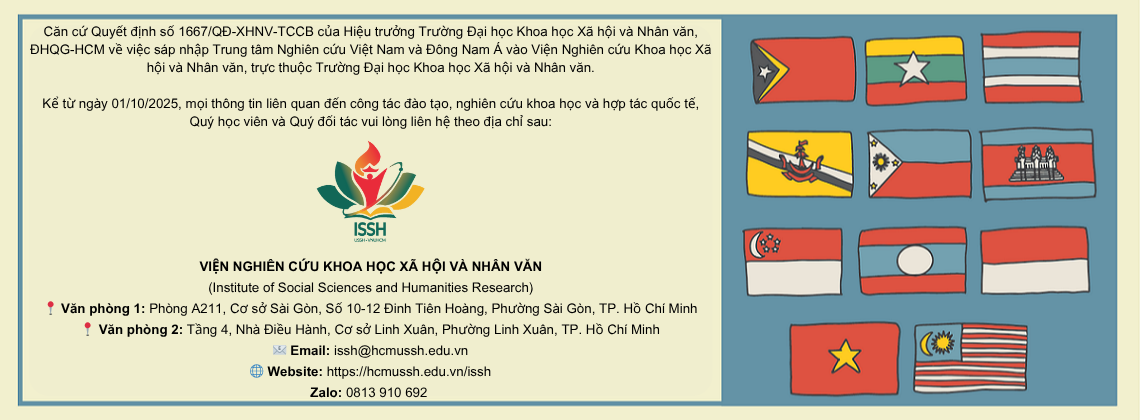RESEARCH ON FRESH VEGETABLES VILLAGE IN HUE AND HOI AN WITH UNIVERSITY OF TOKYO
, 17/09/2013 14:09The Center for Vietnamese and Southeast Asian Studies (CVSEAS) has been conducting a research on villages of fresh vegetables in Hue and Hoi An from August 28 to September 23, 2013.
Members of the research group include Dr. Tran Dinh Lam, Director of the CVSEAS; Assoc.Prof.Dr. Thanh Phan, Deputy Director of the CVSEAS; Prof. Ikemoto Yukio, a scholar of poverty and inequality in Asia from the University of Tokyo and some other participants.
.jpg)
Prof. Ikemoto an members of the research group in Hue.
This is an interdisciplinary study on poverty based on capability approach conducted by the CVSEAS in cooperation with the University of Tokyo. This time the research group was welcomed at the Century Riverside Hotel by Assoc.Prof.Dr. Le Van An, Vice Rector of the University of Agriculture and Forestry – Hue University. After some discussion this professor, the research group headed towards Thanh Trung Village, Quang Thanh Commune, Quang Dien District to carry on the study on a “fresh vegetables village”. Nguyen Dinh, a farmer experienced in cultivating fresh vegetables, said that this area belongs to the commune’s project, which has been granted for 12 farmer households to grow fresh veggies under the instructions of the University of Agriculture and Forestry – Hue University and the support of the Hue City Department of Science and Technology in terms of breeds of plants and techniques. Here used to be a water rice-grown area. In 2003 there was a change in the type of plant it grows and its fresh vegetables village officially started operation in 2008. According to Dinh, to meet the market needs, vegetables in the village are categorized into three types with different prices: vegetables supplied for restaurants, those for supermarkets and those for local markets with the “Hoa Chau” trademark labeled on the products. Through the fieldwork, the research group realized that farmers in the village mostly use organic fertilizers, such as manure and microbiological fertilizers, and avoid as much of chemical counterparts and pesticide as they can. Therefore, this locality’s products have succeeded in gaining consumers’ trust.
In addition to the “Hoa Chau” vegetables village, Hue City still has a “centella garden” which is 5 kilometers away from the village and also considered a fresh vegetables garden. The research group found out that the garden’s productivity is not high as lots of centella plants’ leaves turn yellowish. Assoc.Prof.Dr. Tran Thu Ha, a lecturer of the Faculty of Agricultural Studies, University of Agriculture and Forestry – Hue University and also the instructor of our research there, indicated that specializing in one kind of vegetables and not stopping cultivation temporarily to re-enrich soil lead to the case of yellowish leaves, which reduces productivity and products’ quality.
.jpg)
A centella garden in Hue City.
After studying the centella garden, the research group departed Hue City for Hoi An to work with the Hoi An Office of Commerce and Tourism, where there was the welcome of Dinh Thi Thu Thuy, Head of the Office; Nguyen Phung, Head of the Organizing Committee of Foreign Projects and Hong Linh, an tourism expert in Hoi An. As for the side of the research group, it saw the participation of Dr. Tran Dinh Lam, Assoc.Prof.Dr. Thanh Phan, Prof.Dr. Ikemoto Yukio and some other members. During the meeting, Thuy gave us the overview of tourism development and the trend in sustainable eco-tourism in Hoi An, then Phung accompanied us to the field trip at Tra Que village, which is a traditional vegetables village formed 300 years ago with the total area of 40 hectares and 290 households. Unlike the one in Hue, farmers of this vegetables village remain their traditional cultivation, not relying on modern techniques and methods. There they improve soil with organic fertilizers such as algae and moss taken from rivers and ponds, not using pesticide and intercropping different kinds of vegetables (not specializing in one like what Hue farmers are doing) in order to avoid insects’ multiplication. According the research group’s evaluation, this model of growing fresh vegetables needs expanding to other areas to have more experience exchanges. The main problem of tourism development, however, is how to help farmers gain the most benefits in order to protect the eco-environment and food safety for communities in a more practical and long-lasting way. Hoi An has achieved good results from the trend in sustainable tourism development, and not many places can do the same. The research group hopes that such a field work program will promote more collaboration among universities in the Southeast Asian region.
.jpg)
Dr. Tran Dinh Lam, Prof. Ikemoto and members of the research group in Hoi An.














